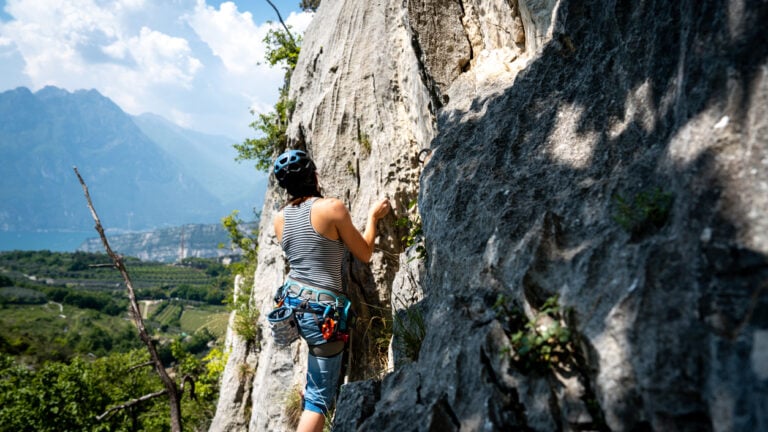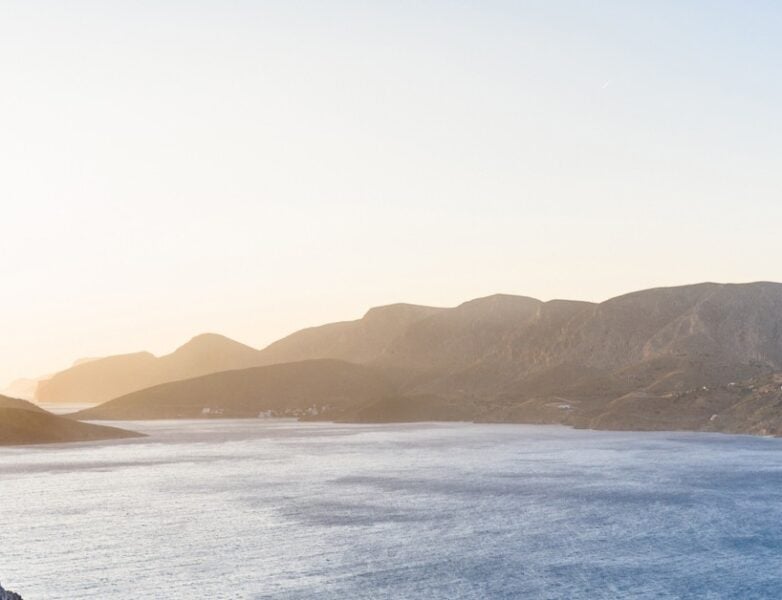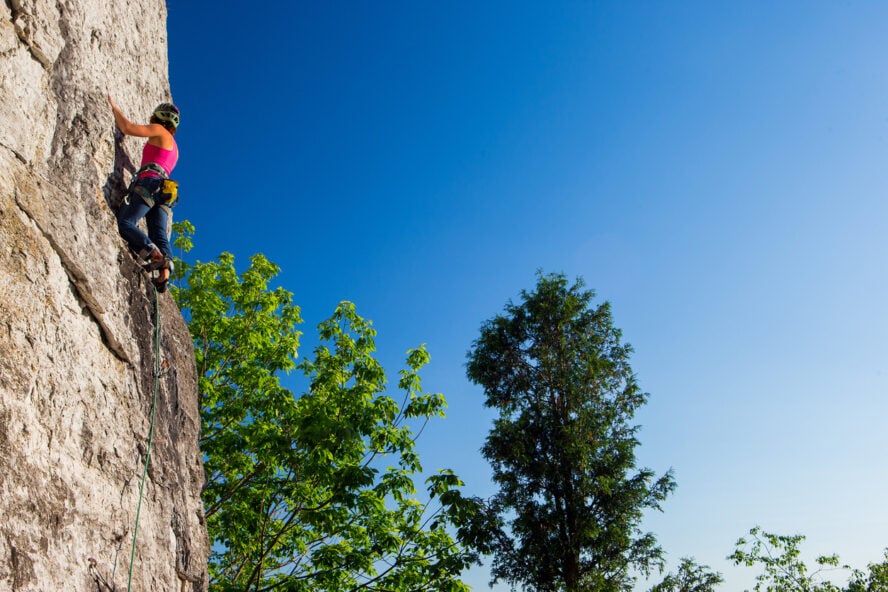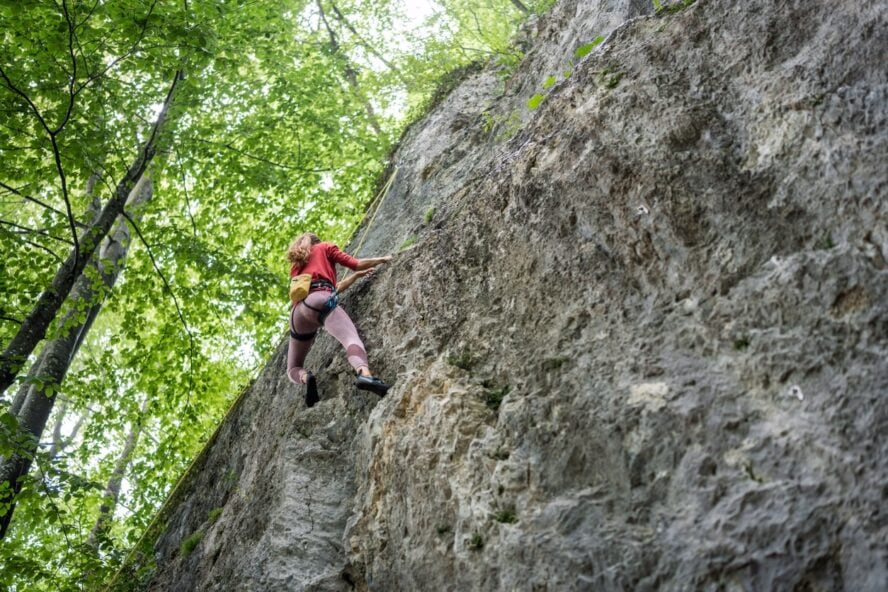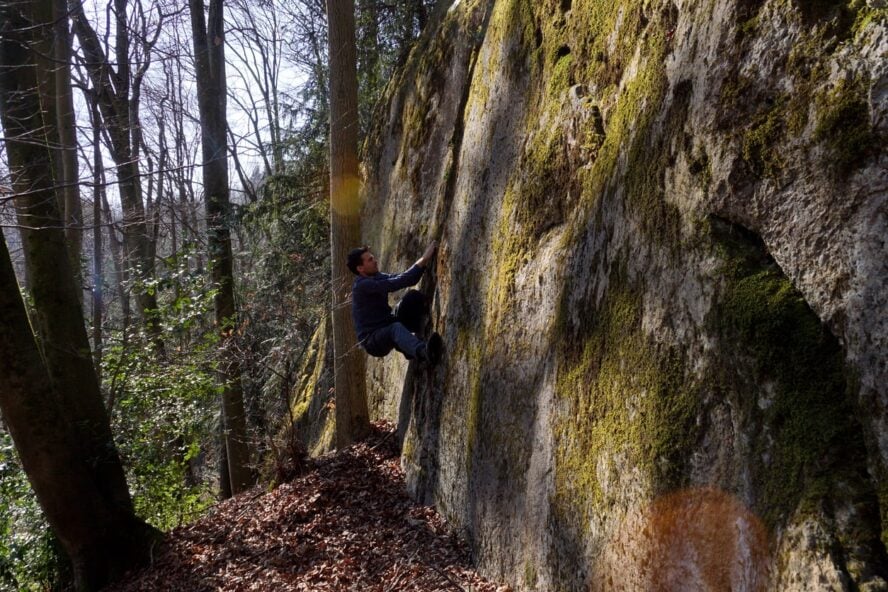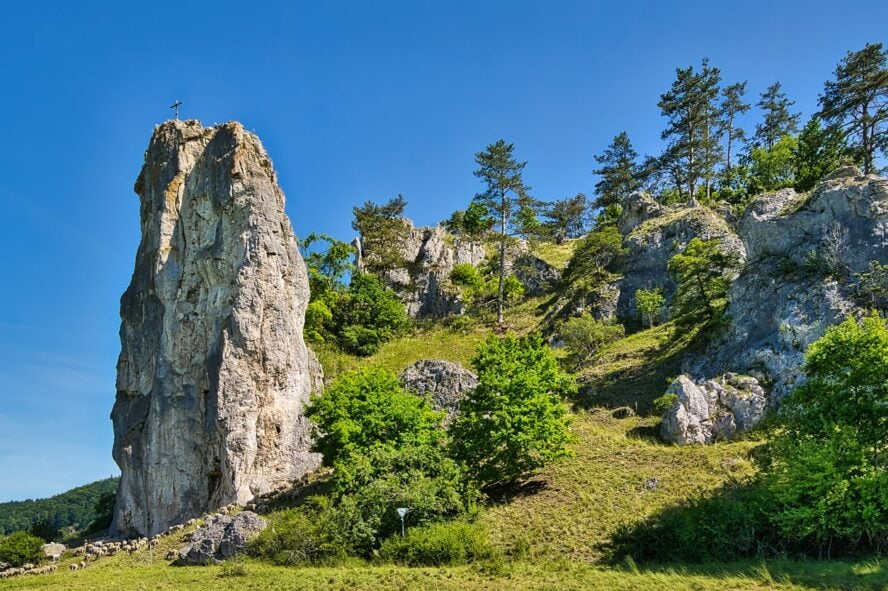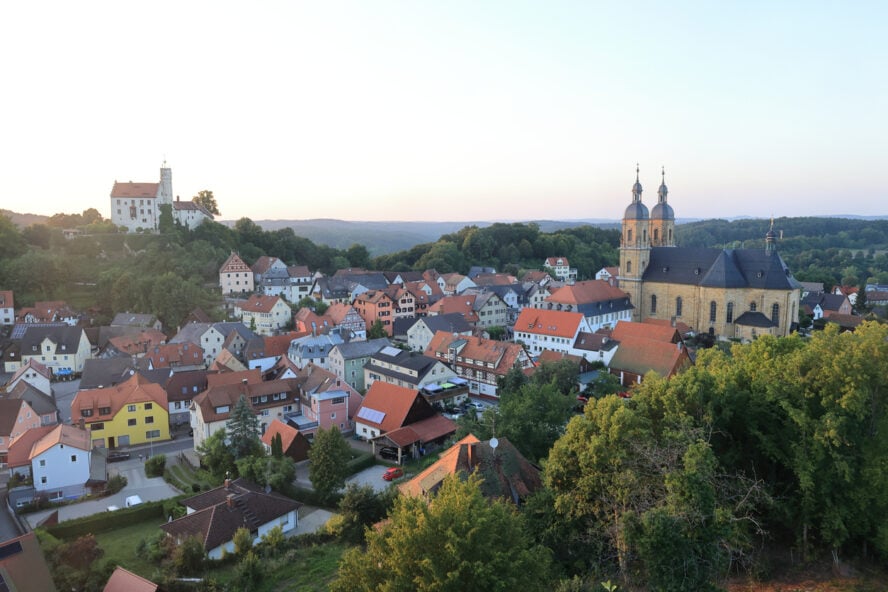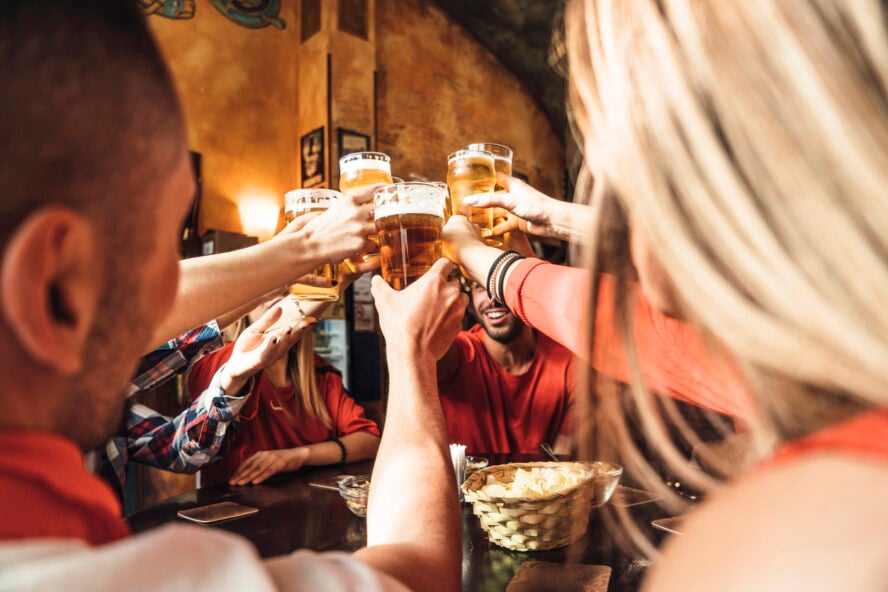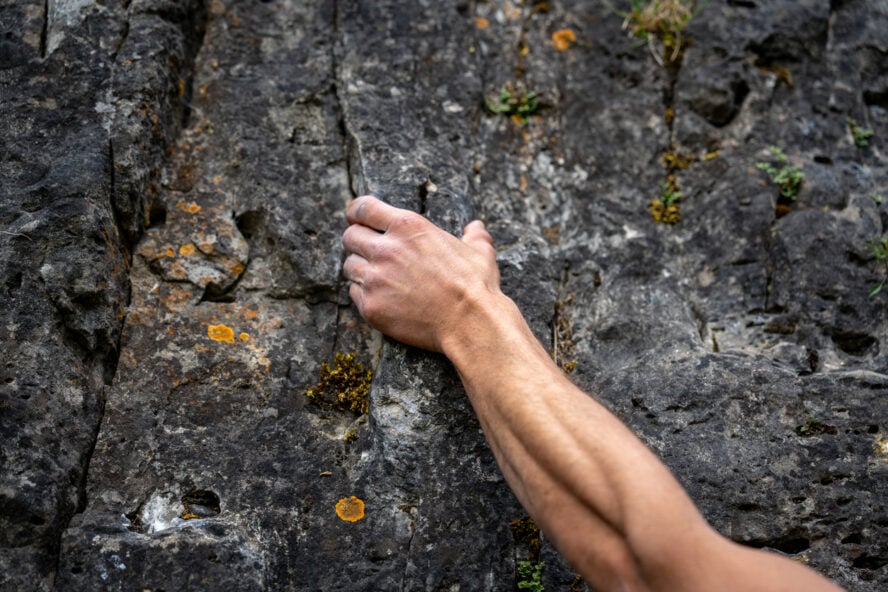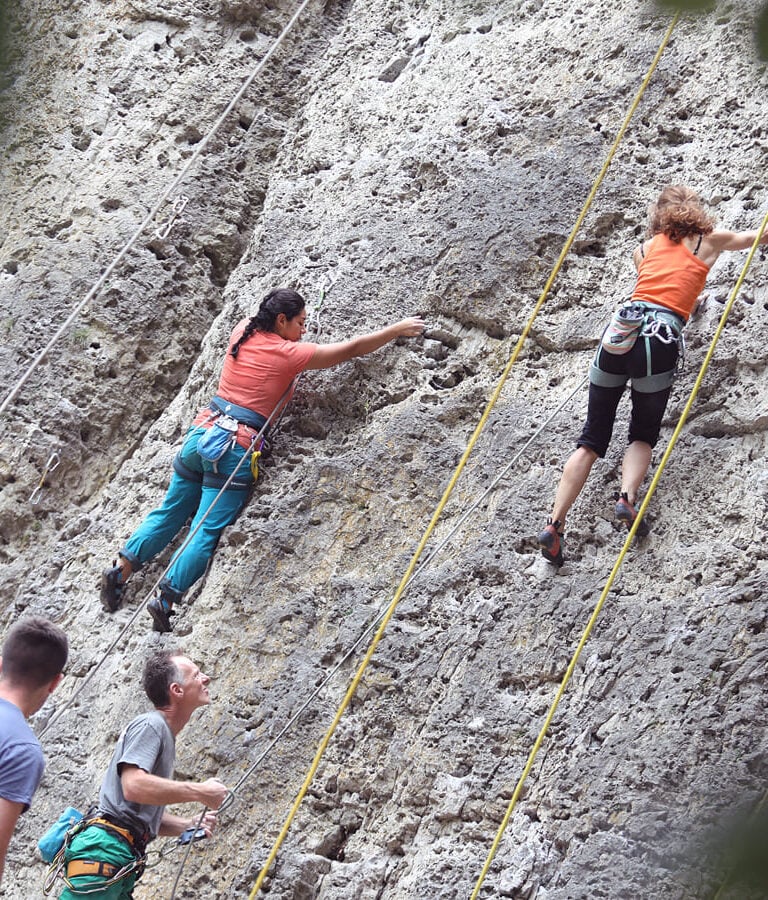Tucked into the rolling hills and forests of northern Bavaria, Frankenjura is one of Europe’s most legendary climbing regions. Home to more than 1,000 crags and over 12,000 routes, it’s a place where climbing history was made and where the sport continues to thrive.
If you’re new to climbing in Europe, or even new to outdoor climbing in general, this is the place to go. With short approaches, routes of every grade, and a warm community of climbers, it’s the perfect destination to take your first steps into outdoor sport climbing.
This guide will walk you through everything you need to know: what makes Frankenjura unique, when to go, how to prepare, and what kind of climbs to expect.
What makes climbing in Frankenjura so special
Frankenjura is a piece of climbing history.
This is where Wolfgang Güllich invented the campus board in the 1980s, which forever changed training methods worldwide.
It’s also where he established “Action Directe,” the world’s first 9a (5.14d), in 1991. For many climbers, visiting Frankenjura feels like a trip through time.
But the area isn’t only for pros. What makes Frankenjura stand out is its accessibility. You’ll find thousands of routes in the easier grades (3–6 UIAA / 5.6–5.10), many of them on solid limestone with positive holds and friendly protection.
Unlike some alpine regions where approaches can be hours long, here you’re rarely more than a 10–15 minute walk from the car park to the base of the crag.
The climbing style is also distinctive. It’s all about short, powerful routes; most pitches are between 8 and 25 meters (26–82 feet). Instead of long endurance challenges, Frankenjura demands bursts of strength on pockets and crimps. This makes it a great place to build finger power and refine your technique.
What’s the climbing in Frankenjura like?
Frankenjura is famous for its single-pitch sport climbs on pocketed limestone. The pockets range from deep, juggy holes that swallow your fingers to razor-sharp two-finger grips that test your precision.
Grades go from beginner-friendly 3s and 4s (roughly 5.6–5.8 YDS) up to some of the hardest climbs in the world. Many routes fall into the 6–8 UIAA (5.10–5.13 YDS) range. Plenty of variety for intermediate climbers.
While sport climbing is THE thing here, there are also some traditional climbs and even a few multi-pitch routes, though these are less common. If you’re new here, the focus will be on well-bolted sport climbs where you can safely learn the ropes.
One thing to note: bolts in Frankenjura are often more spaced out than at typical sport crags in France or Spain. This adds a touch of adventure, even on moderate climbs. It’s worth practicing confident movement and controlled falls at the gym before your trip.
The rock
Frankenjura is defined by its limestone.
Pocketed, textured, and sharp in all the right ways, the rock here is known for small finger pockets, crimps, and technical footwork. Climbing often feels powerful and bouldery, but the friction and features make it engaging and rewarding.
The crags themselves are scattered through lush forests. Many routes stay shaded and climbable even on warm summer days.
The routes
With more than 12,000 routes, you’re spoiled for choice.
Routes are generally shorter than what you’ll find rock climbing in Spain or France—often 10 to 25 meters—but they pack a punch. You’ve got well-bolted lines, maintained by a dedicated local community, and plenty of variety in style: overhangs, vertical walls, technical slabs, and classic pocket-pulling endurance tests.
Frankenjura climbing grades
Frankenjura covers the whole spectrum of grades, from beginner-friendly 4s and 5s to world-famous testpieces in the 8s and 9s (French scale).
The area is especially known for hard, bouldery sport climbs in the 7s and 8s. But don’t worry if you’re new. You’ll find no shortage of accessible, well-protected lines to build that confidence.
Must-try Frankenjura climbing routes
With over 12,000 routes, choosing where to start can feel overwhelming. While the “must-do” routes often depend on your grade, a few climbs stand out for their history, beauty, or accessibility.
Action Directe (XI/9a / 5.14d): This isn’t one you’ll climb as a newcomer, but you’ll definitely want to make a pilgrimage to the Waldkopf crag to see where Wolfgang Güllich put up the world’s first 9a (5.14d) in 1991. It’s inspiring to stand at the base of a route that changed climbing forever.
Herkules (VII+ / 5.10d): A popular moderate line at the Mariental crag, this route shows off the classic pocket-pulling style of Frankenjura. Expect big, fun moves with solid protection.
Emanuelle (6 / 5.9): Located at Weißenstein, the route is a great choice for first-timers looking for a friendly introduction to the limestone, with positive holds and a straightforward line.
Loch Ness (8 / 5.11d): A slightly more demanding classic, named after the “monster” pockets you’ll encounter! This route at Richard-Wagner-Fels is a pocket climber’s dream.
One of the joys of Frankenjura is that you’ll rarely have to queue. Unlike famous crags in Spain or France, the sheer number of routes here means you can always find an uncrowded wall. For your first trip, aim for a mix: a few easier classics to get used to the style, one or two harder challenges to push yourself, and maybe a visit to a historic crag for inspiration.
What are the approaches like?
One of Frankenjura’s greatest strengths for beginners is its accessibility. Unlike alpine climbing destinations where approaches can take hours and involve steep ascents, most Frankenjura crags are a quick walk from the road.
On average, you’re looking at 5–20 minutes of walking through forest trails. Some crags are almost roadside, where you can park and be climbing within minutes. Others require a short uphill hike, usually no more than 1 kilometer (0.6 miles). Elevation gain is minimal. Typically 50–150 meters (165–490 feet).
The trails themselves are usually well-marked and easy to follow, though they can get muddy after rain. Bring good approach shoes or light hiking boots. The forested paths are beautiful in their own right, passing limestone outcrops, mossy rocks, and even the occasional castle ruin.
This all means that even beginners can pack multiple crags into a single day without exhausting themselves. Try a morning session at one crag, grab lunch in a village beer garden, and still have energy for an afternoon climb at another spot.
The short approaches make Frankenjura especially appealing for those who want maximum climbing with minimal logistical hassle.
Is there any bouldering in Frankenjura
There is!
Although Frankenjura is primarily a sport climbing destination, there are scattered bouldering areas throughout the forests.
The rock style is similar: pocketed limestone that rewards finger strength and precise movement. It’s not as extensive as Fontainebleau or Rocklands, but bouldering here is a great way to warm up, rest your rope skills for a day, or just sample a different style.
Beyond the climbs: Bavarian culture & cuisine
Climbing in Frankenjura isn’t just about the rock. The culture is a big part of what makes it great.
Most climbers take the time between rock days to walk around the small Bavarian towns with timber-framed houses, medieval castles, and traditional breweries.
Food is the classic German affair, hearty and delicious. Pretzels, sausages, schnitzel, and, of course, world-class beer brewed by local monasteries and family-run breweries.
You should finish every day on the rock with a cold beer in a shady biergarten. The perfect place to swap beta and stories with locals and travelers alike.
Frequently asked questions about climbing in Frankenjura
Interested in climbing Frankenjura? Still got some questions? Here are the answers for the most common ones we get.
What is the best season for climbing in Frankenjura?
The climbing season in Frankenjura is long. But, for our money, spring and autumn are the sweet spots.
In the spring, the forests come alive with green leaves, and cooler temps make for sticky limestone. May is particularly beautiful with wildflowers blooming.
Climbing is possible in the summer as well, but can be hot and humid. Many crags are shaded by the forest, so you should stick to those.
The fall is considered the best season by many local climbers. Crisp air, dry rock, and golden forests make for the perfect atmosphere.
Climbing doesn’t stop in the winter, either, but conditions vary. Some sunny walls dry quickly and can be pleasant on mild days.
If you’re visiting for the first time, plan for late spring or autumn. Not only will you have the best conditions, but the area is less crowded than during summer vacation periods.
How do I get to Frankenjura?
Frankenjura is located in Bavaria, roughly between the cities of Nuremberg, Bamberg, and Bayreuth. The region is rural, dotted with small villages, breweries, and farms.
-
By air: The closest international airport is Nuremberg (about 45 minutes away by car). Munich and Frankfurt are also options, about 2–3 hours by train or car.
-
By train: Germany’s train system makes it easy to reach nearby towns, but getting around the crags is easiest with a rental car. Public transport won’t take you to trailheads.
-
By car: A car is the most convenient way to hit up multiple crags. Parking areas are generally well-marked, and approaches are short.
Where should I stay when climbing in Frankenjura?
The region is dotted with climber-friendly guesthouses, campsites, and small inns.
Popular bases are Eichstätt, Gößweinstein, and Pottenstein, each of which gets you close to a concentration of crags.
Camping is also a great way to stay immersed in the climbing community, while guesthouses offer the added bonus of Bavarian hospitality and hearty breakfasts.
Are there any beginner-friendly routes?
Absolutely.
Frankenjura is famous for its hard sport climbs, but the area also has hundreds of well-bolted beginner and intermediate routes.
If you’re new, you can cut your teeth on pocketed 5s and 6s, with safe bolting and straightforward approaches.
You’ll find beginner-friendly sectors in guidebooks or by asking around in local climbing gyms.
What gear should I bring?
For newcomers to Frankenjura, here’s what you’ll want in your kit:
-
Harness, helmet, and climbing shoes
-
60-meter (197-foot) rope – Most climbs are short, but a 60 m rope covers nearly all routes.
-
12–15 quickdraws – Enough for the average route, with some to spare.
-
Belay device and locking carabiners
-
Chalk bag and chalk – Those limestone pockets can get sweaty.
-
Guidebook – “Frankenjura” by Sebastian Schwertner is the go-to, available in English and German.
-
Approach shoes – Many paths are forested and can be muddy.
A helmet is strongly recommended. While the crags are generally solid, occasional loose rock exists, and there are often climbers above you.
The local climbing (and beer) culture
Frankenjura’s climbing culture is laid-back and welcoming. You’ll find climbers from all over Europe, but there’s also a strong local community. Many Bavarian climbers head out after work or on weekends, and it’s not unusual to share routes and beta with strangers who soon become friends.
Rest days are just as much a part of the culture. The region is home to dozens of small breweries—many family-owned for centuries. After a day of climbing, you can enjoy a cold local beer and hearty Franconian food like bratwurst, schnitzel, or käsespätzle (cheese noodles). Don’t miss the chance to sit in a traditional beer garden surrounded by forest and farmland.
Frankenjura’s eco-friendly climbing ethic
Climbers here take sustainability seriously.
Many crags are located in protected nature reserves, and access depends on respecting rules. Stick to established trails, pack out your trash, and avoid climbing in restricted areas during bird-nesting season. The local climbing community has worked hard to maintain good relationships with landowners and conservationists.
Doing your part helps keep Frankenjura open and thriving.
Frankenjura is a piece of climbing history
Frankenjura is more than just a climbing area. For many climbers, it’s a pilgrimage.
With its rich history, thousands of routes, and unique Bavarian charm, it’s a place where every climber can find the challenge they need. Here, you can pull pockets on limestone legends, sip beer in medieval towns, or simply to soak in the magic of the forests. Whatever you’re into, Frankenjura delivers an experience that belongs on every climber’s bucket list.

